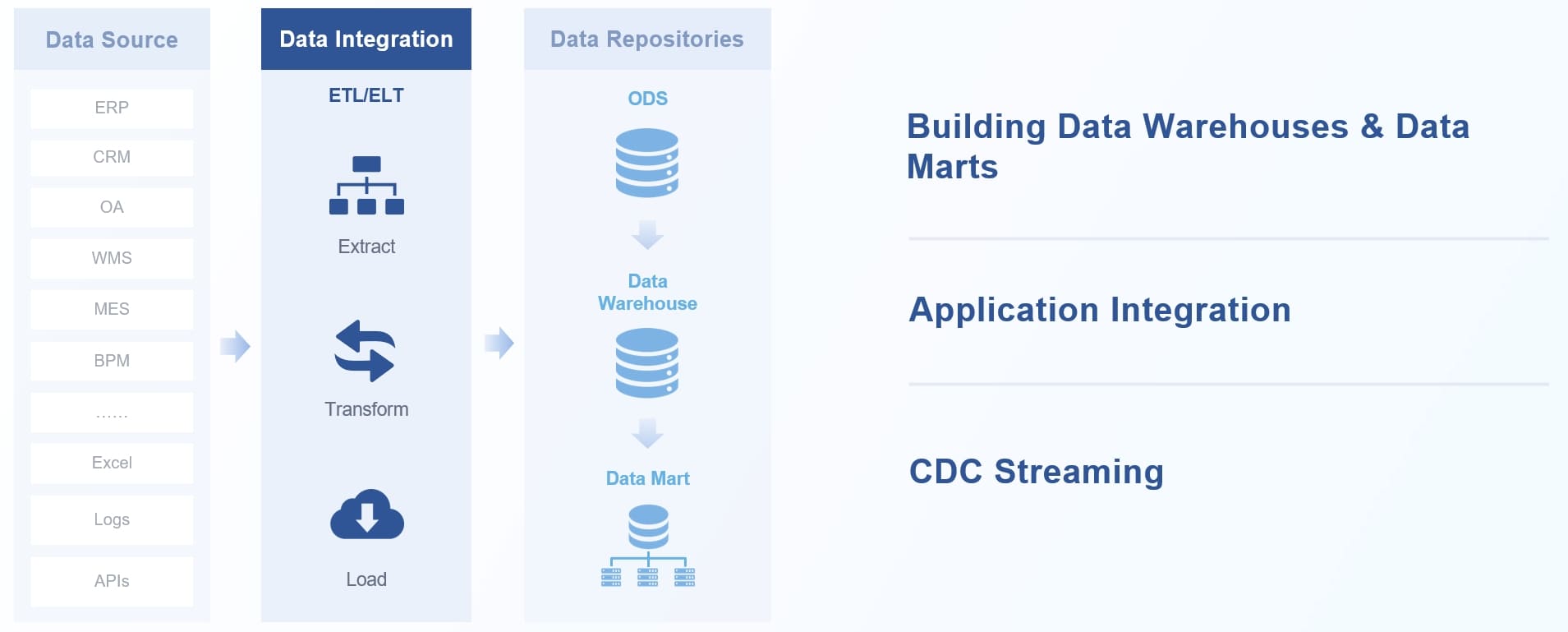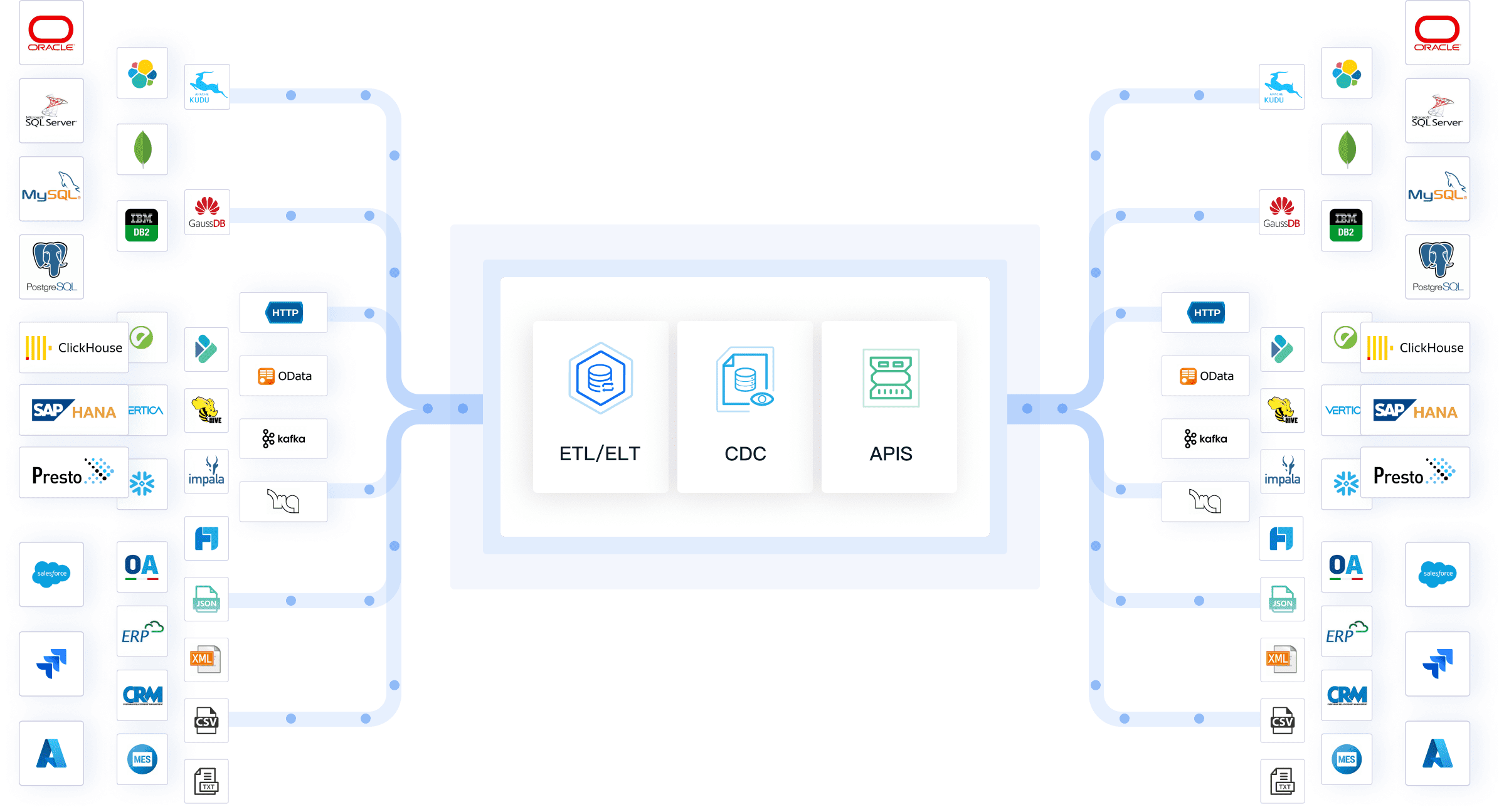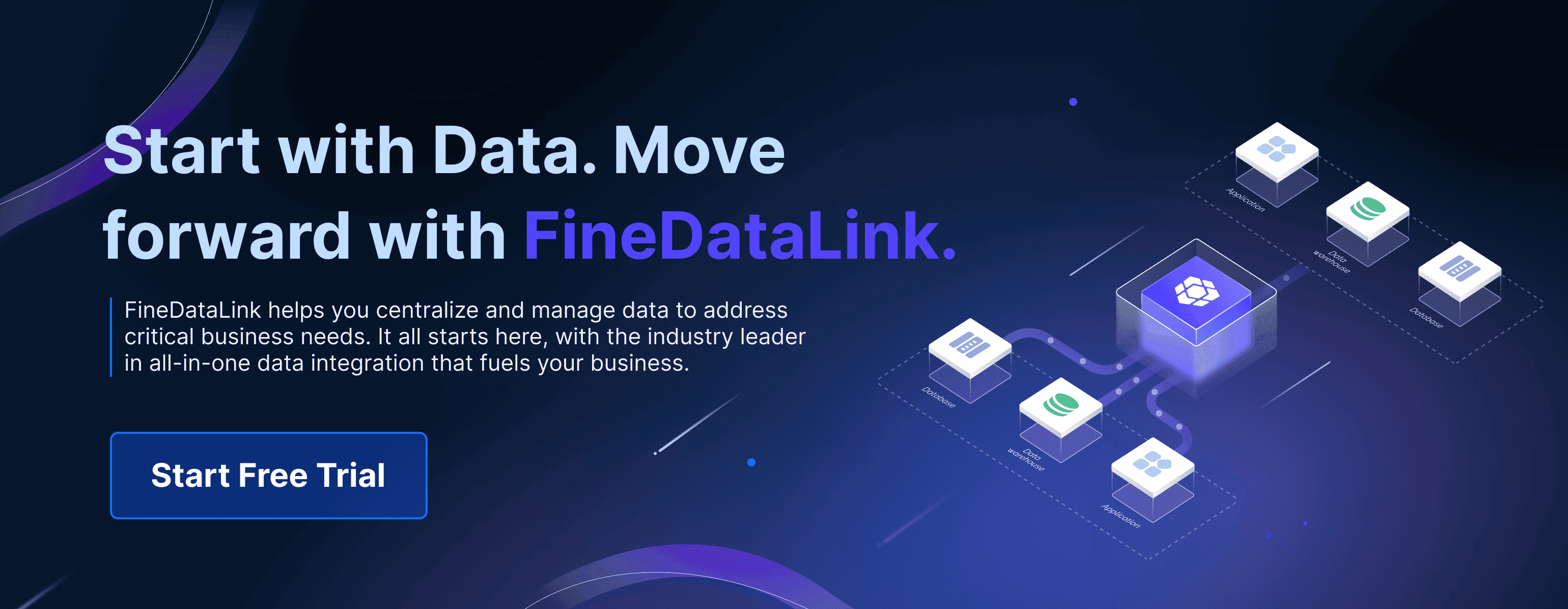

Data fidelity refers to the accuracy, consistency, and reliability of data throughout its lifecycle. It ensures the information you rely on remains trustworthy and actionable. In 2025, transparency in data practices will form the backbone of trust in data-driven systems. Organizations will achieve this through responsible data usage, ethical handling, and compliance with regulations like GDPR. However, the growing reliance on data will also amplify risks. For instance, studies show large language models often struggle to differentiate between genuine forecasting and memorization of key economic variables, raising concerns about data reliability.
Key Takeaways
- Data fidelity means data is correct, consistent, and dependable. It helps people make smart choices.
- Good data fidelity lowers mistakes in healthcare and finance. This leads to safer and better results.
- Checking data often and using strong rules keeps data accurate and follows laws.
- Tools like FineDataLink make combining data easier. They keep it updated and reduce mistakes.
- Caring about data fidelity makes people trust systems. It improves work and encourages new ideas.
What is data fidelity?
Definition and characteristics of data fidelity
Data fidelity refers to how accurately and consistently data represents the real-world information it is meant to capture. It ensures that the data remains reliable and trustworthy throughout its lifecycle. For example, in healthcare, data fidelity measures how well patient records reflect actual medical information. High data fidelity minimizes errors, enhances patient safety, and supports accurate clinical decisions. Reliable data also enables meaningful research and analysis, leading to better insights. Furthermore, it ensures seamless data exchange between systems, which is vital for interoperability in modern industries.
Key characteristics of data fidelity include:
- Accuracy: Data must precisely represent the real-world scenario it describes.
- Consistency: Information should remain uniform across different systems and timeframes.
- Reliability: Data must be dependable for decision-making and analysis.
When you prioritize these characteristics, you create a foundation for informed decisions and effective operations.
How data fidelity differs from data quality
Although data fidelity and data quality are closely related, they are not the same. Data quality focuses on the overall usability of data, considering factors like completeness, timeliness, and relevance. On the other hand, data fidelity emphasizes the accuracy and consistency of data as it mirrors real-world conditions.
Think of it this way: data quality ensures the data is fit for use, while data fidelity ensures the data is true to its source. For instance, a dataset may be complete and timely (qualities of good data quality) but still lack fidelity if it contains inaccuracies or inconsistencies. By maintaining high data fidelity, you ensure that the data not only meets quality standards but also remains trustworthy and authentic.
The role of data fidelity in modern data ecosystems
In today’s interconnected world, data fidelity plays a critical role in ensuring the smooth functioning of data ecosystems. Modern systems rely on accurate and consistent data to drive artificial intelligence, machine learning, and other advanced technologies. Without high data fidelity, these systems risk producing flawed outputs, leading to poor decisions and inefficiencies.
For example, in healthcare, accurate patient records are essential for reducing misdiagnosis risks and improving patient outcomes. In finance, reliable data prevents fraud and ensures compliance with regulations. Across industries, data fidelity supports interoperability, enabling seamless data exchange between systems and organizations.
To maintain data fidelity, you can leverage tools like FineDataLink. This platform simplifies data integration and ensures real-time synchronization across multiple sources. By using such solutions, you can build a robust data layer that supports business intelligence and decision-making.

In 2025, as data continues to drive innovation, the importance of data fidelity will only grow. Ensuring your data remains accurate and consistent will be key to staying competitive in a data-driven world.
The importance of data fidelity in 2025
Data fidelity in the age of AI and machine learning
Artificial intelligence (AI) and machine learning (ML) rely heavily on accurate and consistent data to function effectively. These technologies analyze vast datasets to identify patterns, make predictions, and automate decisions. Without high data fidelity, the outputs of AI and ML systems can become unreliable or even harmful. For example, an AI model trained on inconsistent or inaccurate data may misclassify images or provide incorrect recommendations.
You must ensure that the data feeding these systems is accurate and consistent. This is especially critical in industries like healthcare, where AI-powered diagnostic tools depend on precise patient data to deliver accurate results. Similarly, in finance, ML algorithms use historical data to detect fraud or predict market trends. Poor data fidelity in these scenarios can lead to financial losses or compromised security.
Tip: Regularly audit your data sources and use tools like FineDataLink to maintain real-time synchronization and consistency. This ensures your AI and ML systems operate on reliable data.
Consequences of poor data fidelity for businesses and society
The consequences of poor data fidelity can be far-reaching. For businesses, it can result in flawed decision-making, financial losses, and reputational damage. Imagine a retail company using inaccurate sales data to forecast demand. This could lead to overstocking or understocking, both of which harm profitability. In the public sector, poor data fidelity can undermine trust in government initiatives or public health campaigns.
On a societal level, the consequences of poor data fidelity can be even more severe. Inaccurate data in healthcare systems can lead to misdiagnoses or ineffective treatments. In education, unreliable data can skew research findings, affecting policy decisions. These examples highlight the critical importance of data fidelity in maintaining trust and ensuring positive outcomes.
Building trust in a data-driven world with FanRuan
In 2025, trust will be the cornerstone of any data-driven system. You can build this trust by prioritizing data fidelity. FanRuan offers solutions like FineDataLink, which help organizations integrate and manage data across multiple sources. This platform ensures real-time synchronization and supports advanced ETL/ELT processes, making it easier to maintain high data fidelity.
FineDataLink simplifies complex data integration tasks with its low-code platform. It allows you to synchronize data in real time, reducing errors and ensuring consistency. For example, if your organization operates across multiple departments, FineDataLink can help you create a unified data layer. This not only improves operational efficiency but also enhances decision-making.
Note: By leveraging tools like FineDataLink, you can address challenges like data silos and manual processes. This ensures your data remains accurate, consistent, and reliable, fostering trust in your systems.
In a world increasingly driven by data, the importance of data fidelity cannot be overstated. It is the foundation upon which trust, innovation, and success are built.
How to maintain and improve data fidelity
Best practices for ensuring data accuracy and consistency
Maintaining data fidelity requires a proactive approach to ensure data accuracy and consistency. You can follow these best practices to achieve reliable and trustworthy data:
- Understand your audience and their needs. This helps you collect relevant and meaningful data.
- Engage participants in surveys or data collection processes to prevent errors caused by disengagement.
- Implement robust data validation processes during data entry or migration. This ensures the accuracy and integrity of your datasets.
- Regularly cleanse and standardize your data. This step removes inaccuracies and ensures uniformity across datasets.
- Leverage advanced tools and AI to automate data quality checks and enhance efficiency.
By adopting these practices, you can create a strong foundation for maintaining data fidelity in your organization.
Leveraging tools like FineDataLink for data integration and governance
Technology plays a vital role in maintaining data fidelity. Tools like FineDataLink simplify data integration and governance, making it easier to ensure data accuracy and consistency. FineDataLink offers real-time data synchronization, advanced ETL/ELT capabilities, and a low-code platform for seamless data management.
For example, if your organization deals with multiple data sources, FineDataLink can help you integrate them into a unified system. This reduces errors and ensures consistent data flow across departments. Its drag-and-drop interface also makes it accessible to users without technical expertise.

Using such tools allows you to address challenges like data silos and manual processes. This ensures your data remains accurate, consistent, and ready for analysis.
The role of compliance and data governance in maintaining fidelity
Compliance and data governance are essential for maintaining data fidelity. A strong governance framework ensures that your data collection and processing practices align with industry standards. Regular audits, both internal and external, help evaluate the accuracy and consistency of your data.
Internal audits focus on compliance with organizational policies, while external audits provide an objective assessment of your data stewardship practices. These audits identify gaps and ensure your data remains reliable.
By integrating governance frameworks and conducting regular audits, you can build trust in your data systems. This not only enhances data fidelity but also ensures compliance with regulations, safeguarding your organization from potential risks.
Real-world applications of data fidelity
Healthcare: Ensuring accurate patient records and diagnostics
In healthcare, maintaining data fidelity is essential for ensuring the accuracy of patient records and diagnostics. Accurate healthcare data allows medical professionals to make informed decisions, reducing the risk of misdiagnosis and improving patient outcomes. For instance, synthetic data used in healthcare must retain statistical properties similar to real-world data to support machine learning models in diagnostics. A study titled "EHR-Safe" demonstrated how synthetic data could maintain fidelity while preserving privacy, outperforming previous methods on real-world datasets like MIMIC-III and eICU.
High data fidelity also supports interoperability between healthcare systems. When patient records are consistent and reliable, different systems can exchange data seamlessly, enabling better coordination of care. This is particularly important in emergency situations where timely access to accurate data can save lives.
| Aspect | Findings | | --- | --- | | Fidelity | Synthetic data must maintain statistical properties similar to real data for accurate applications. | | Utility | Evaluated across three machine learning use cases, highlighting the importance of utility. | | Privacy Risks | Different models showed varying levels of privacy risks, emphasizing the need for balance. |
Finance: Preventing fraud and ensuring regulatory compliance
In the financial sector, data fidelity plays a critical role in fraud prevention and regulatory compliance. Accurate data ensures that fraud detection systems can correctly identify fraudulent transactions while minimizing false positives. Metrics like precision, recall, and F1 score measure the effectiveness of these systems. For example, precision indicates the proportion of identified frauds that were correct, while recall measures how many actual frauds were detected.
| Metric | Description | | --- | --- | | True Positive (TP) | Correctly identifies a transaction as fraud. | | True Negative (TN) | Correctly identifies a transaction as non-fraud. | | False Positive (FP) | Incorrectly identifies a non-fraud transaction as fraud. | | False Negative (FN) | Incorrectly identifies a fraud transaction as non-fraud. | | Precision | Proportion of identified frauds that were correct. | | Recall | Proportion of actual frauds that were identified correctly. | | F1 Score | Harmonic mean of precision and recall. |
Regulatory compliance also depends on high data fidelity. Financial institutions must maintain accurate records to meet legal requirements and avoid penalties. Reliable data ensures transparency and builds trust with stakeholders.
Retail: Enhancing customer experiences through reliable data
In retail, reliable data enhances customer experiences by enabling personalized interactions and improving operational efficiency. Accurate data allows you to analyze consumer behavior in real time, creating detailed customer profiles. This helps you tailor marketing campaigns and product recommendations to individual preferences. Studies show that customers with the best experiences spend 140% more than those with the poorest experiences.
Retailers also use big data analytics to optimize store performance. For example, analyzing sales trends and inventory levels helps you make informed decisions about stock management. Reliable data ensures these insights are accurate, reducing the risk of overstocking or understocking. By focusing on data fidelity, you can deliver memorable customer experiences that drive satisfaction and loyalty.
- Retail analytics provides valuable data that helps analyze and improve store performance and customer experience.
- Customers with the best experiences spend 140% more than those with the poorest experiences.
- Real-time insights into consumer behavior allow for nuanced customer profiling and personalized marketing campaigns.
How FineDataLink supports data fidelity across industries
FineDataLink helps you maintain data fidelity across industries by simplifying data integration and ensuring real-time synchronization. Its features address common challenges like data silos, inconsistent formats, and manual processes. Whether you work in healthcare, finance, or retail, FineDataLink provides tools to keep your data accurate and consistent.

Healthcare: Reliable patient data for better outcomes
In healthcare, FineDataLink ensures patient records remain accurate and accessible. You can use its real-time synchronization to update medical records across systems instantly. This reduces errors and improves patient safety. For example, when hospitals share data between departments, FineDataLink ensures the information stays consistent. This helps doctors make informed decisions and enhances interoperability.
Finance: Preventing fraud and meeting compliance
FineDataLink supports fraud detection systems by providing reliable data pipelines. You can integrate data from multiple sources to create a unified view of transactions. This improves the accuracy of fraud detection algorithms. FineDataLink also helps you meet regulatory requirements by maintaining consistent and auditable records. Its ETL/ELT capabilities simplify data preparation for compliance reporting.
Retail: Enhancing customer experiences
Retailers use FineDataLink to analyze consumer behavior and optimize operations. You can integrate sales data from different platforms to create detailed customer profiles. This helps you personalize marketing campaigns and improve inventory management. FineDataLink’s real-time synchronization ensures your data remains up-to-date, enabling faster and more accurate decision-making.
Tip: FineDataLink’s low-code platform makes it easy for you to manage data without extensive technical expertise. Its drag-and-drop interface saves time and reduces errors.
FineDataLink’s versatility allows you to maintain high data fidelity across industries. By using its features, you can build trust in your data and improve operational efficiency.
Data fidelity will be the cornerstone of success in 2025. Accurate and consistent data ensures reliable insights, enabling you to make informed decisions. Without it, businesses risk wasted resources, missed opportunities, and reputational damage.
To stay competitive, prioritize data fidelity. Adopt best practices and leverage tools like FineDataLink to maintain accuracy and consistency. By doing so, you build trust, improve efficiency, and drive innovation in a data-driven world.
Click the banner below to experience FineDataLink for free and empower your enterprise to convert data into productivity!
FAQ
Data fidelity ensures data accurately represents real-world conditions. Data quality focuses on usability, including completeness and timeliness. Fidelity emphasizes truthfulness, while quality ensures the data is fit for use. Both are essential for reliable decision-making.
FineDataLink integrates data from multiple sources, ensuring real-time synchronization and consistency. Its low-code platform simplifies complex tasks, reducing errors. By addressing challenges like data silos and manual processes, it ensures your data remains accurate and reliable.
AI and machine learning rely on accurate data to produce reliable outputs. Poor fidelity leads to flawed predictions and decisions. High-fidelity data ensures these systems function effectively, especially in critical fields like healthcare and finance.
Yes, inconsistent or inaccurate data erodes trust. Customers expect reliable information, especially in sectors like retail and finance. High data fidelity builds confidence, enhances experiences, and fosters long-term loyalty.
Implement robust governance frameworks and conduct regular audits. Tools like FineDataLink simplify compliance by maintaining consistent, auditable records. This ensures your data aligns with industry standards and regulations.
Continue Reading About Data Fidelity
2025 Data Pipeline Examples: Learn & Master with Ease!
Unlock 2025’s Data Pipeline Examples! Discover how they automate data flow, boost quality, and deliver real-time insights for smarter business decisions.
Howard
Feb 24, 2025
Best Data Integration Platforms to Use in 2025
Explore the best data integration platforms for 2025, including cloud-based, on-premises, and hybrid solutions. Learn about key features, benefits, and top players.
Howard
Jun 20, 2024
2025 Best Data Integration Solutions and Selection Guide
Explore top data integration solutions for 2025, enhancing data management and operational efficiency with leading platforms like Fivetran and Talend.
Howard
Dec 19, 2024



